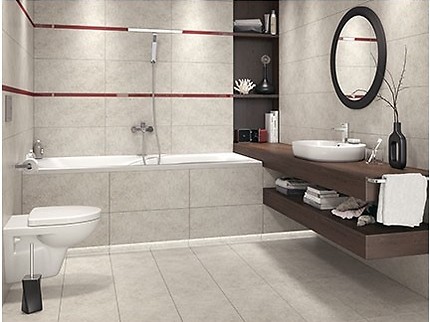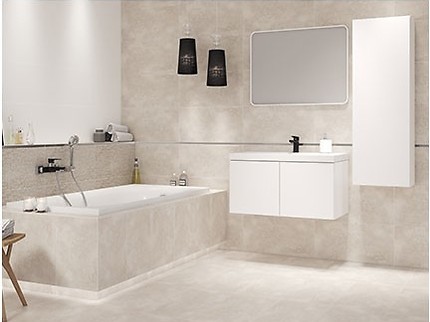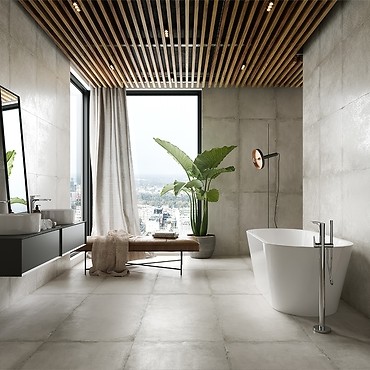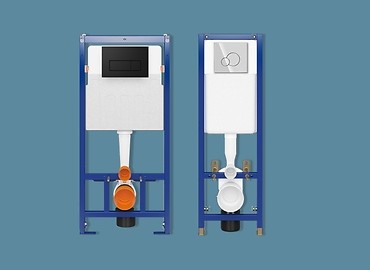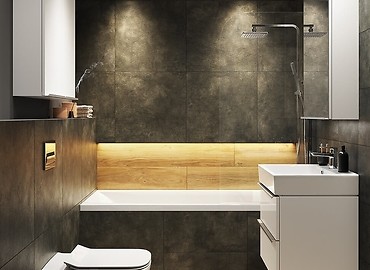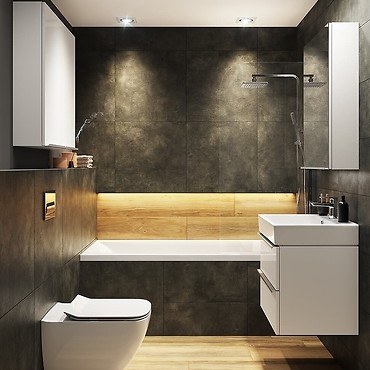Concrete in interiors - ideas for arrangements

This atmospheric, familiar material will fit just as well in a large house as in a townhouse or apartment building. How and where can we use it to avoid it looking cold and raw? It is best to start with the basics – the floor. Tiles which perfectly mimic the popular material allow you to create very diverse, creative and modern compositions. Floor tiles can form a visually-impressive base for experimentation.
An alternative to architectural concrete
Over the past few years, we have witnessed a real boom in concrete and grey-coloured interiors. Grey finishing materials are perfect in houses which sport a modern design. Regular architectural concrete requires special treatment, however, and you can opt for cheaper and easier to use ceramic tiles which mimic the material instead. Universal gres tiles are a great choice here – the same tiles can be used for the walls and the floor, resulting in a coherent space ready for some bold decorations. The monochrome look of the surfaces can be broken up by bold, geometrical decorative elements from the Normandie collection, the two-colour decorations from the Monti set, or the glossy decorations from the Memories collection.
Industrial atmosphere
The industrial style is in its heyday at the moment. It moved from hulking former factories into the much smaller interiors of modern offices and apartments. Concrete walls and floors have become the zeitgeist for interior design, which is always busy, always under construction – this is how we express our consent to imperfection and apparent negligence. In reality, we put emphasis on that which constitutes the essence of big city life. Its cold shade of grey, matte, rough surface and irregular patterns make floors which imitate raw, sanded concrete look great in the living room as well. The universal gres tiles from the Serenity collection lend a unique, bold, artistic character to interiors, and the Lando tiles reflect the simplicity and sincerity of the material with their subtle patterns.
Tried and true arrangements
Concrete-grey floor and walls go great with other shades of grey or white, while still retaining their minimalist, industrial character. They look beautiful combined with vividly-coloured walls or additions, which contrast with the monotony of greys. When put next to elements which epitomise the classics of global design or modern art, they result in surprising and extremely fashionable compositions. Tiles which mimic concrete are perfect as raw-looking flooring and allow you to think outside the box when designing the walls, which can be decorated with imitation slabs of concrete.
Floors and walls covered with cladding which resembles concrete look very attractive. However, it is important to bear in mind that concrete is a very heavy-looking material, and that it can easily dominate the entire interior. This is why our advice is to exercise caution and moderation when designing spaces with concrete as the principal element. Use it within reason and remember to combine it with the appropriate equipment. Introduce it along with subdued, preferably monochrome colours – black, white, green and wood are the best colours for this role. The latter, when combined with grey or graphite, creates unique and surprisingly warm compositions.
See more tips in this category
-
TECH LINE - CONCEALED WC FRAMES AND FLUSH BUTTONS
TECH LINE OPTI concealed WC frames and the ultra-narrow TECH LINE BASE will allow us to save the available ... -
VIRGO - Sign of Beauty
The VIRGO concept collection is a unique proposal for all those looking for stylish, designer solutions ...

